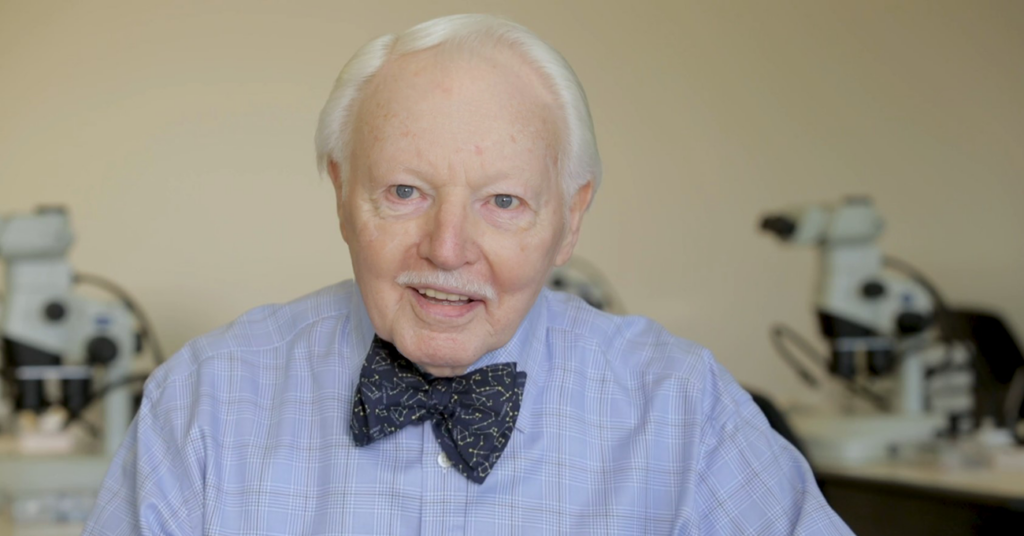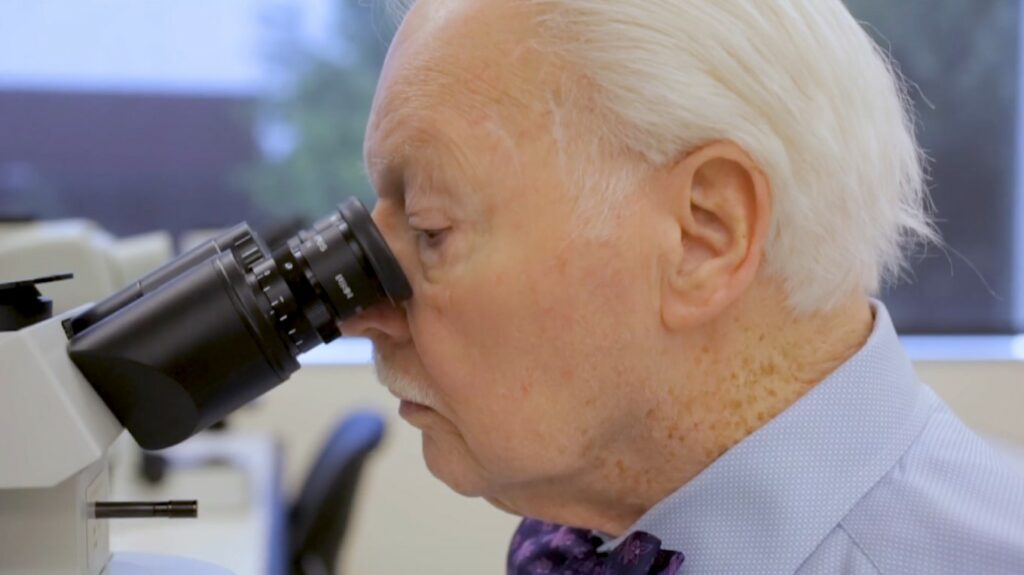In Memoriam: John Gustav Delly (1934-2024)

If you ask a microscopist about the most influential people in the field of polarized light microscopy, a name that usually comes to mind is Dr. Walter C. McCrone. In the early days, when Dr. McCrone was first establishing himself and his particle identification lab, McCrone Associates, Inc., he had the fortune of meeting John Gustav Delly, a high school chemistry teacher in the Chicago Public School system. John was attending a two-week-long polarized light microscopy course taught by Dr. McCrone. As the story goes, and it’s much better in John’s own words (in the video below), during the course, Dr. McCrone had taken notice of John’s encyclopedic particle identification abilities. At the completion of the course, Dr. McCrone asked John if he wouldn’t mind looking at a sample he had under his microscope. After sitting to observe a preparation on the microscope’s stage, John stated, “It looks like Pseudotsuga taxifolia.” Dr. McCrone rubbed his chin and replied, “Well, I think it’s Douglas Fir.” To which John replied, “That’s what I said.” John had given Dr. McCrone the Latin name for Douglas Fir. With that, McCrone hired John on the spot and the rest, as they say, is history.
You might think John’s professional career as a microscopist took off with the Douglas Fir analysis, but his love for microscopy began more than twenty years prior to meeting Dr. McCrone. In some ways, he had been preparing his whole life for that very moment. John often cites the book “Exploring the World with the Microscope” by Oscar Richards—a book written in 1938 for children, as his inspiration for becoming a microscopist. As an eight-year-old boy, John performed all the experiments in Richards’ book, exploring the world microscopically, just as the title implies.
John enjoyed an amazing 58+ year career with The McCrone Group and the McCrone Research Institute. In addition to his vast contributions and passion as an educator, he was also the past head of McCrone Associates’ laboratory for contamination identification, and supervised research concerned with troubleshooting microscopic particle problems for government and industry, particularly the handling and identification of small particles that contaminate the atmosphere, water sources, industrial processing areas, and cleanrooms. John was also responsible for studies pertaining to industrial quality control, and the causes of failures and defects in industrial products, and a consultant to the medicolegal professions on matters both civil and criminal that involved the evaluation of physical evidence. He is the author of more than 500 books, chapters, and articles, most notably, “Essentials of Polarized Light Microscopy and Ancillary Techniques”, co-author of “The Particle Atlas”, and has contributed to microscopy publications around the world.
John had a profound impact on the field of microscopy, and on all who had the good fortune to learn from him over the years. He was a teacher, mentor, scholar, writer, visionary, friend, and of course, a world-class microscopist. Regardless of the relationship, John always made others feel cared for, valued, and inspired by his ever-generous presence. He had an unbelievable ability to fill in the blanks when a question was unanswered or not answered to satisfaction.
John believed in lifelong learning and his extensive interests beyond microscopy were a testament to the fact that he lived his life learning all that he could.
There are not enough words to recount his many interests, however, there is a word coined by John to describe his work: Aerobiogeoindustriocosmomicromorphology. The first four letters are aero because all the other categories that follow bio, geo, industrio, and cosmo are what become suspended in the air—essentially a word representation of the particle categories, which eventually settle out of the air and become deposited onto surfaces, showing up as environmental microscopic contaminants.
We mourn the loss of another legendary microscopist, while at the same time being grateful for and humbled by John’s extensive contributions to the field of microscopy and to all who had the pleasure of learning from him.

Comments
add comment